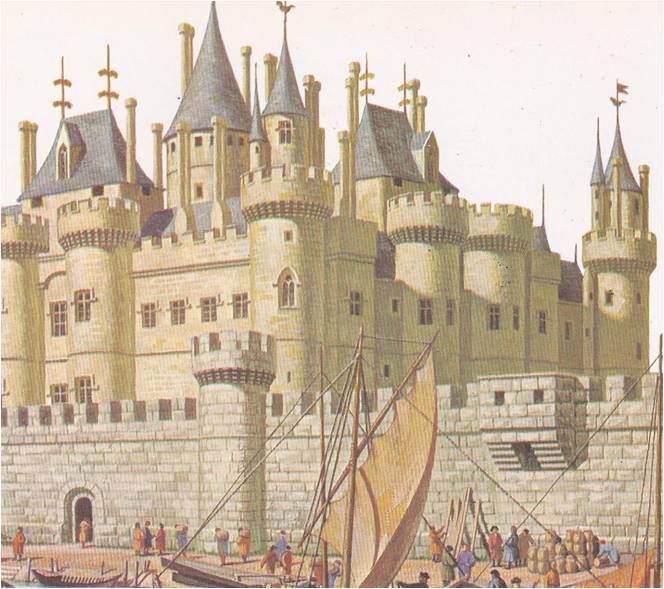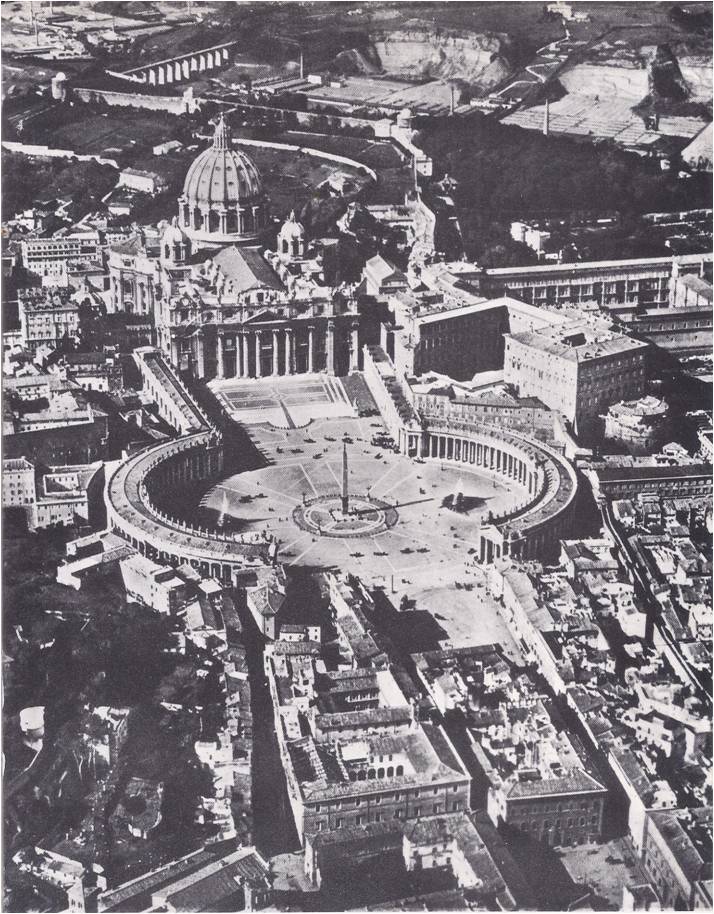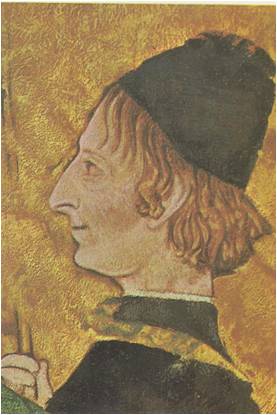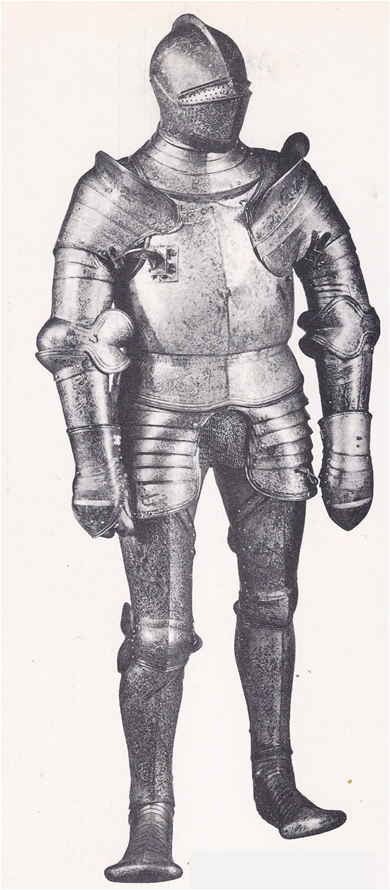In 1600, the Duke Virginio Orsini‚ nephew of the Medici ruler of Florence, arrived in England. He came to spend the New Year’s holidays and to see for himself the woman who fascinated all Europe. She was Elizabeth, queen of England and she was already a legend. To aristocratic travelers, such as the Duke Orsini, she was the most important tourist sight in England. Years later, she would still be as fascinating as any woman in history, for in her time — the Elizabethan Age — her country flourished as never before and the Renaissance blossomed in England. As a girl of twenty-five, Elizabeth had come to the throne of a kingdom torn by religious hatred and civil wars. Her towns were poverty stricken, her farmlands unsown and her army and navy devastated by a series of disastrous foreign wars. Her subjects were weary and confused after years in which short-lived monarchs had alternately honoured and defied the pope and the church of England had split away from the church at Rome. Across the English Channel, the kings of France, Spain and other Catholic nations prepared to attack. They were sure that England, with only a woman to lead it, would soon be easily conquered. THE “FLORENTINE” QUEEN Yet forty years later, when the Duke Orsini came to London, Elizabeth was still queen, the ruler of a kingdom as great as any in Europe. This seeming miracle was the queen’s own doing. “I know I have but the body of a weak and feeble woman,” she had told her people, “but I have the heart and stomach of a king.” She had lived up to her words, for she proved to have the commanding air of her kingly father and grandfather, Henry VIII and Henry VII. England had never known …
Read More »The Renaissance in the North and Spain 1400 – 1598
Through the bustling market-towns of the Low Countries passed the traders, goods and gold of all Europe. Here the luxuries of Asia — spices‚ silks, jewels and perfumes — were exchanged for the practical products of the North — woolen cloth and utensils of iron and copper and wood. In shops and inns, wily Italian shippers and bankers bargained with the solemn, solid merchants from Germany and Flanders — and made the profits that built the Renaissance cities of Italy. In tall-spired cathedrals, in palaces, guildhalls and universities, wandering Italian artists discovered works of art and scholarship as great as any they had known at home. The men of the North had needed no outsiders to teach them about money-making or magnificence. Long before the Renaissance spread across Europe from Italy, they had turned to business, formed the guilds, grown rich and invested their gold in displays of splendour. Flanders was the center of a great cloth-making industry. Germany was the home of expert craftsmen—armourers, goldsmiths and engravers. In Haarlem in the Low Countries, a jack-of-all-trades named Laurent Coster had first thought of using movable carved letters to form words and sentences from which pages could be printed. About 1440, Johann Gutenberg and his assistant Peter Schoeffer had put Coster’s idea to use, made the first printed books and brought about a revolution in learning that changed the history of the world. The northern artists also were inventive and their guildsman patrons kept them as busy as the artists of Italy. Of course, their tastes were not Italian and their paintings and statues, like their ideas, were very different from those in Florence, Milan and Rome. When Masaccio was first teaching the Florentines how to paint figures that “stood on their feet,” the wool merchants of Flanders were buying paintings …
Read More »The Italian Kings of France 1494 – 1590
In all Europe there was no greater admirer of Italy than Francis I, king of France. Francis practiced Italian manners in his court, built Italian palaces in his parks and kept Italian books in his library. He collected Italian paintings and the artists who painted them. Indeed, the king admired Italy so much that he wanted to conquer it all. Francis was not the first ruler to feel these strong Italian longings. In England, Spain and Germany, kings and princes were busily remodeling their courts, their castles and themselves in the Italian manner. Though the little states of Italy were growing poor and weak, it seemed that every richer, stronger nation in Europe was struggling to catch up with them. Actually, it was the Renaissance that Francis and the others were striving to match — the displays of splendour, the well-bred elegance of the courts, the wisdom, and of course, the riches. Western Europe was waking up to the new age, after long years of poverty, confusion and fear brought on by the wars and plagues that destroyed the old world of chivalry. Through the Alps from Italy came an army of peaceful invaders, merchants first, then artists and men of learning. Along with their bolts of wool and Silk, their books and paintings, they brought the Renaissance. The Europeans, gradually stirring with the excitement of the new age, turned to Italy where its wonders had first appeared. Some sent their scholars and artists to Italy to study. Some, like the French, sent their troops. In 1494, little Charles VIII of France clapped a gilded helmet over his shaggy red hair, marched down the peninsula and conquered Naples. For three months he paraded about his new city, while four embarrassed Neapolitan noblemen trotted beside him, holding a golden canopy over …
Read More »Venice, City in the Sea 1350 – 1590
The houses of Venice are “like sea-birds half on sea and half on land,” said Cassiodorus. An officer of a king of the Goths, Cassiodorus saw Venice in 537. It was a little settlement of huts built on the mud-flats in an out-of-the-way lagoon. Its people were refugees‚ Italians who had been driven from their homes by a horde of barbaric invaders. They were safe in the lagoon, for no stranger could navigate the treacherous channels. For the sake of safety, they were content with comforts that were simple at best. “In this place,” Cassiodorus said, “rich and poor are alike — they all fill up on fish.” A thousand years later, when Venice had become the richest and most powerful city in Italy, it was still a place of refuge from the wars and turmoil of the mainland. The lagoon was still an unbeatable defense. Instead of streets, there were canals and the city’s mansions, marble palaces and gold-peaked churches still hovered above the water like sea-birds, perched on 117 islands linked by nearly 400 bridges. In every way, Venice belonged to the sea and for many years the sea belonged to Venice. The descendants of the settlers commanded mighty warships that ruled the eastern Mediterranean. With their great merchant galleys, they were the lords of the trade-routes of the Adriatic and Aegean Seas and they sailed the Atlantic to England and Flanders. In the Middle Ages, the Venetians built and manned the hundreds of ships that took the Crusaders to the Holy Land — and they saw to it that the knights captured a few colonies for Venice along the way. Through the years, these colonies multiplied into an ocean empire until even Constantinople, the capital of the old Roman Empire of the East, paid homage to the …
Read More »Rome, the City of the Pope 1492-1564
In 1492, young Giovanni de’ Medici bade farewell to his father, Lorenzo the Magnificent and left Florence to take his place in Rome among the cardinals of the church. At sixteen, Giovanni was a nobleman in the court of the pope, a man of influence and power. That was fortunate, for when Giovanni was eighteen, his family’s power collapsed. The Florentines drove the Medici from their city and Giovanni, who had come home for a visit, narrowly escaped being stoned by the citizens who once had cheered him. As he crept out of the city, disguised as a poor friar, he swore that he would one day return in triumph. First, he thought, he must look to his career in the church. Whatever the Florentines did, he was still a cardinal and in the papal court there were many ways for a clever man to rise to greatness. When he had crossed the Tuscan border, Giovanni threw off his humble disguise, put on the crimson robes and red hat that marked him as a “prince of the church” and took the road that led to Rome. The young cardinal was not alone in hoping to make his fortune in Rome. Indeed, the old city teemed with ambitious men of every sort — scholars and scoundrels, diplomats and spies, millionaires and fortune-hunters, priests and professional murderers. Rome had known every sort of splendour and evil. Memories of unmatched elegance and unbelievable cruelty lingered in the ruins of temples and arenas built by ancient emperors. Grim fortress-houses were reminders of an age of violence, when the bloody feuds of rival clans of nobles had turned Rome into a ghost city. Now there were new mansions, palaces and lofty churches. A new magnificence had come to Rome with the gold that poured into …
Read More »Gentlemen, Scholars and Princes 1400 – 1507
One day in the fifteenth century, the Turkish potentate of Babylonia decided to send gifts to the greatest ruler in Italy. He consulted his counselors and men who had traveled widely in Europe, asking them who best deserved this honour. They agreed that one Italian court outshone the rest and that his court must surely be the home of Italy’s mightiest sovereign. They did not name Milan, the home of the proud Sforza, nor Florence, the city of the clever Medici. The most magnificent court in Italy, they said, was at Ferrara, the capital of the dukes whose family name was d’Este and to Ferrara the Turkish potentate’s ambassadors carried the presents. Ferrara was small, a mere toy state in comparison to Milan or Florence. Actually, it was not an independent state at all. Like several of its neighbours in central Italy, Ferrara had for centuries belonged to the Church. Its duke paid an annual tribute to the pope for the privilege of governing his family dukedom himself. Even so, the Turkish potentate’s advisers had made no mistake. No court in Italy could match the splendor of the court commanded by the dukes of little Ferrara. During the Renaissance, there were many such small cities that won fame. It all depended on their rulers — the ambitious dukes or counts or sometimes, commoners who had gained riches and power. With their money, they, too, hired fine artists, sculptors and architects; they, too, collected manuscripts and things of beauty. So the small cities were as much part of the new age as Florence or Milan. In that new age, Ferrara was a place of old fashioned grandeur. Its dukes, the d’Estes, had come to power in the last days of chivalry. In 200 years, the d’Estes had turned Ferrara into a …
Read More »Milan, City of Splendour and War 1277-1515
Milan’s most important business street had no displays of velvet cloaks, bright bolts of silk, or cloth-of-gold. It was a dusty, smoky street, made hot by the fires of forges and filled with the din of hammers shaping steel — the Street of the Armourers. Milan made the finest armour in the world. In the Middle Ages, the crusaders came there for chain mail and it was said that entire armies were outfitted in a few days. Later, the fashions of war changed. Knights wore heavy suits of jointed steel plates that covered them from head to toe and elegant helmets, gilded, engraved and topped with plumes. The Milanese armourers became artists at molding and carving metal, their sales men were welcomed in every court in Europe and the Street of the Armourers became busier than ever. Armour was the right specialty for Milan, for the city and its rulers seemed to specialize in everything warlike and violent. The dukes of Milan were iron-fisted tyrants, who loved displays of splendour and sometimes cruelty. They did not hide their power like the cautious Medici in Florence. Indeed, they made a show of their strength and wealth. It discouraged invaders, rivals and over-ambitious relatives. The dukes’ domain was rich and as large as any state in Italy. The fertile plain of Lombardy, which lay between the Apennine Mountains and the Alps, attracted as many would-be conquerors as farmers. The prosperous little Lombard towns that the dukes overpowered were quarrelsome and the noblemen of Lombardy never stopped stirring up revolts. To hold on to their dukedom, the rulers of Milan employed the toughest warriors in Italy. They frightened their subjects with harsh laws, rewarded them with pageants and impressed them with magnificent palaces. Splendour, fear and power — these were the specialties of …
Read More »Florence in the Golden Age 1469 -1498
Lorenzo de’ Medici was far from handsome. His skin was sallow, his eyes had a short-sighted squint and his nose was flat and wide. His voice was high and thin. Like every man in his family, he had the gout. Yet there was grandeur in everything Lorenzo did. He loved art and books, music and poetry and women. He delighted in sports, hunting and galloping across the brown Tuscan hills. He dealt with ambassadors like a prince, his palace was the gathering-place for the great men of Italy and his city won renown for both its scholars and its carnivals. No wonder, then, that people called him Lorenzo the Magnificent. Visitors to Lorenzo’s city found the streets jammed with people, and marveled at the splendid buildings. There were hundreds of shops and houses, dozens of churches and palaces. Even the bridges over the River Arno were lined with little stores and homes. The busiest spot in all the bustling city was the Mercato Vecchio, or the Old Market. This was the gathering-place of shopkeepers, the men who were the smocks and fur caps that marked them as members of the lesser guilds. Here were the grocers with their little booths, the butchers, the fishmongers, the apothecaries and the barbers, who shaved their customers in the midst of the crowd. The most important businessmen met in another square, the Mercato Nuovo, or the New Market. It was not as noisy here and most of the men were dressed in the long dark gowns and bright hoods of the merchants. In the shops and under awnings, the guildsmen displayed the goods they sold to all of Europe — richly dyed wool and Silk, velvet, taffeta, damask, satin and cloth-of-gold. Just off the New Market was the street of the grain-dealers and not …
Read More »Florence, First City of the Renaissance 1200-1480
March 25, 1436, was the Feast of the Annunciation and the city of Florence was decked out for a celebration. Banners flew everywhere, ribbons and garlands of flowers decorated the houses and draperies of cloth-of-gold were looped across the shop-fronts. The city bustled with excitement, for on this Annunciation Day the pope was to dedicate the Duomo, the wonderful new Cathedral of Santa Maria del Fiore, then the largest church in the world. At dawn, the people began to fill the streets. They crowded around the high wooden walk that led to the cathedral from the monastery where the pope was staying. At mid-morning, when a blare of trumpets signaled the start of the ceremonies, a great procession filed along the walk. The pope, robed in white and crowned with a tiara, was attended by seven cardinals, clothed in scarlet and 37 bishops and archbishops, all in purple. There were the priors, the governors of Florence and the representatives of the people of sixteen districts of the city. Each representative carried a standard marked with the emblem of his district, such as the lion, the unicorn, or the viper. Marching in a solemn line came the leaders of the seven great guilds — the wool merchants, the Silk weavers, the bankers, the notaries, the druggists (who also dealt in spices and jewels), the furriers and the calimala, the ancient and honoured guild of cloth merchants. Behind them came the officers of fourteen “Guilds of Lesser Arts” shoemakers, bakers, innkeepers, grocers, carpenters and the like. As the procession entered the cathedral, all the church bells in Florence rang out. Their deep voices called across the city, resounded in the fields beyond and echoed in the hills of Tuscany. Triumphantly they proclaimed the greatness of the new Duomo that the Florentines said …
Read More »The Sound of Bells and Trumpets in Europe 1300 – 1600
Bells and trumpets sounded across Europe in the time that men would call the Middle Ages. Knights in glistening armour rode forth to serve God and their kings; life was like a stately procession winding through a landscape marked by castles and cathedrals. Each man knew his place. He was a prince, a knight, a squire, a priest, a craftsman, or a serf. He wore the clothes that belonged to his rank — the armour and family emblems of a nobleman, the robes of a churchman, or the rough wool jerkin of a serf. He lived according to an age-old set of rules — the knightly code of chivalry, the vows of a monk, or the duties of a serf to the lord who owned the land he farmed. Such, it was said, was the will of God. It seemed impossible to imagine that life could ever be any different and indeed, almost no one remembered that it had been different in the past. In Athens, once the most beautiful and exciting city in the world, the palaces and temples of the Greeks were vacant ruins, overgrown with weeds. In Rome, the vast arenas and the Senate House were silent. The Forum, the ancient gathering place of Roman throngs and center of the greatest empire man had known was now a cow pasture. Hidden away in the castles and cathedral libraries, manuscripts that held the science, poetry and wisdom of two thousand years of life and discovery lay dusty and unread. All this, too, it was said, was the will of God. To the men of the Middle Ages, ruins taught a lesson: life was short, the works of mankind soon fell to dust and a man’s time on earth should be spent only in preparing for death and what came …
Read More »









